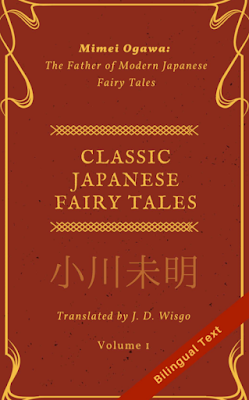"A Midsummer Night's Dream" by William Shakespeare (published 1600)
Three different groups are presented in this classic comedic play by William Shakespeare. The mortals - which include Theseus, Hippolyta, Egeus, Lysander, Hermia, Demetrius, and Helena - are wrapped up in their own lives, loves, and relationships with one another. Then there is a second group of mortals, but they are actors in the works of putting on a performance/play. These actors are Peter Quince, Nick Bottom, Francis Flute, Snug, Tom Snout, and Robin Starveling. The third group consists of the playful, mischievous fairies: Titania, Robin, Peaseblossom, Cobweb, Moth, Mustardseed, Philostrate, and Oberon.
The whole story takes place in the forest - during midsummer - and includes equal parts sleeping, dreaming, and being awake. While the humans discuss their affairs and troubles, the fairies watch in secret and take notes, and, in their true spirit, decide to do a bit of tinkering with regards to the angel of love, Cupid. When the humans, such as Lysander and Hermia, are asleep in the woods, the sprites take a love potion from a potent purple flower and drip it on their eyelids, all the while reciting a poem-like spell dictating that whoever they see upon awakening will become the sole object of their affection. This happens once or twice more during the course of the story, causing much confusion and chaos to the mortals, and much delight to the fairies.
Meanwhile, the play-actors devise a story to perform for all: these scenes include some of the funniest lines I've ever read ("...you'd do good to play the lion, for it is nothing but roaring"). Tom Snout is actually assigned the role of the *wall* (a literal wall with a chink in it, a wall which speaks) that separates two lovers. Another, Robin Starveling, is assigned the part of the *moon*. These cheerful, ridiculous actors and their play offer some of the best meta-commentary on storytelling ever written, I think.
As these three stories overlap and intertwine, Shakespeare's genius comes to the fore in terms of his ability to remark on life's themes in such a precise and artful way using the power of words and deeds. The themes touched on in "A Midsummer Night's Dream" include the fickleness of immature love, the recognition of unseen powers at play within the human realm, the cathartic experience of theatrical performance, and the blurring of lines between audience and performer. I love that when the play was being performed, the viewers (Demitrius, Lysander, Hermia, and others) would comment out loud and join in, adding an especially hilarious tone to the whole endeavor.
For those just beginning to read Shakespeare, or those interested in Shakespeare but are a bit intimidated by the act of reading without an instructor (as I was), this play is the perfect place to start. Its Introduction is very helpful and includes a review of the use of Magical Thinking, an analysis of important lines, and a summary of important topics such as metamorphosis and "the festive world" of Shakespeare. Also included are notes about the actual text, which will help new readers understand how to go about reading a play of this sort.
(Much more to be discussed! A great book group idea.)
The whole story takes place in the forest - during midsummer - and includes equal parts sleeping, dreaming, and being awake. While the humans discuss their affairs and troubles, the fairies watch in secret and take notes, and, in their true spirit, decide to do a bit of tinkering with regards to the angel of love, Cupid. When the humans, such as Lysander and Hermia, are asleep in the woods, the sprites take a love potion from a potent purple flower and drip it on their eyelids, all the while reciting a poem-like spell dictating that whoever they see upon awakening will become the sole object of their affection. This happens once or twice more during the course of the story, causing much confusion and chaos to the mortals, and much delight to the fairies.
Meanwhile, the play-actors devise a story to perform for all: these scenes include some of the funniest lines I've ever read ("...you'd do good to play the lion, for it is nothing but roaring"). Tom Snout is actually assigned the role of the *wall* (a literal wall with a chink in it, a wall which speaks) that separates two lovers. Another, Robin Starveling, is assigned the part of the *moon*. These cheerful, ridiculous actors and their play offer some of the best meta-commentary on storytelling ever written, I think.
As these three stories overlap and intertwine, Shakespeare's genius comes to the fore in terms of his ability to remark on life's themes in such a precise and artful way using the power of words and deeds. The themes touched on in "A Midsummer Night's Dream" include the fickleness of immature love, the recognition of unseen powers at play within the human realm, the cathartic experience of theatrical performance, and the blurring of lines between audience and performer. I love that when the play was being performed, the viewers (Demitrius, Lysander, Hermia, and others) would comment out loud and join in, adding an especially hilarious tone to the whole endeavor.
For those just beginning to read Shakespeare, or those interested in Shakespeare but are a bit intimidated by the act of reading without an instructor (as I was), this play is the perfect place to start. Its Introduction is very helpful and includes a review of the use of Magical Thinking, an analysis of important lines, and a summary of important topics such as metamorphosis and "the festive world" of Shakespeare. Also included are notes about the actual text, which will help new readers understand how to go about reading a play of this sort.
(Much more to be discussed! A great book group idea.)




Comments
Post a Comment